As we continue to look around the Düsseldorf exhibition, a curious thing came to light. Not to say that this exposition is much «glamorous» (not Cannes), but it has never positioned itself as an exhibition for «practical yachtsman». It was the segment that was usually of little interest to Düsseldorfers, unlike, say, Hamburg. As Fritz Conain from Conyplex, who already knows my readers, said to me a few years ago: «You see, Hamburg is a show for the yachtsman. And Düsseldorf is a show for the spectator». That's why there were yachts on display in Düsseldorf that would never have been staged in Hamburg (this despite the fact that Hamburg is the richest city in Germany). And that's why in Hamburg they could build wooden dinghies and plug holes in plastic hulls in front of spectators' eyes, demonstrating the goods (materials and application practices) with their faces.
And since due to the crisis the pavilions of pompous Dusseldorf became a little deserted it was decided to let in also «unclean» - those who sell not boats but materials for self-build and repair.
Hunger, as you know, not a cloud - in the sense that want to live, not so you can bend.
It is sacrilege, of course. The blissful world of glossy cases and polished wood was suddenly filled with smells of shavings, primers, paints and resins. The whirring of electric drills added to the atmosphere of business negotiations. Right in the pavilions businesslike men in overalls were planing, drilling, painting, screwing something. The visitors were listening to them in awe.
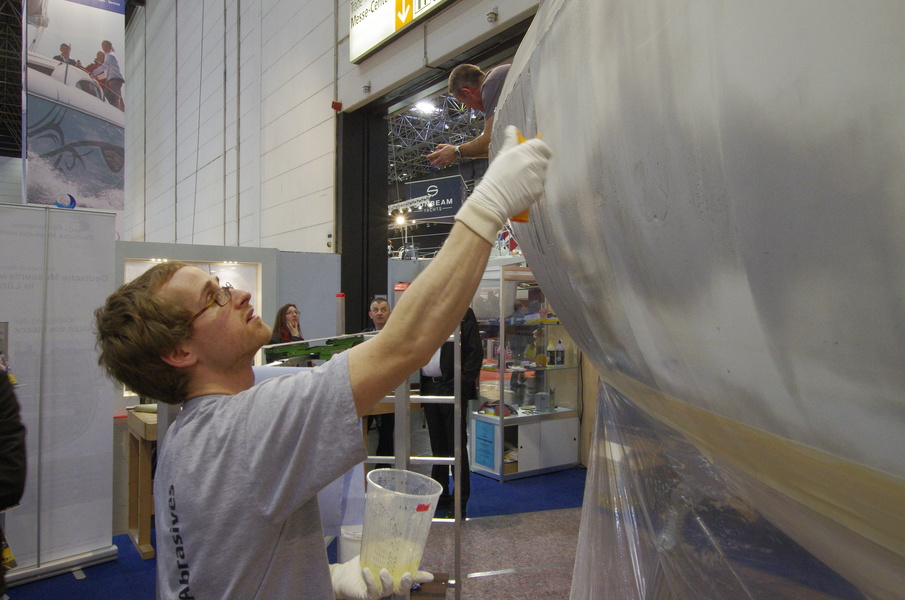
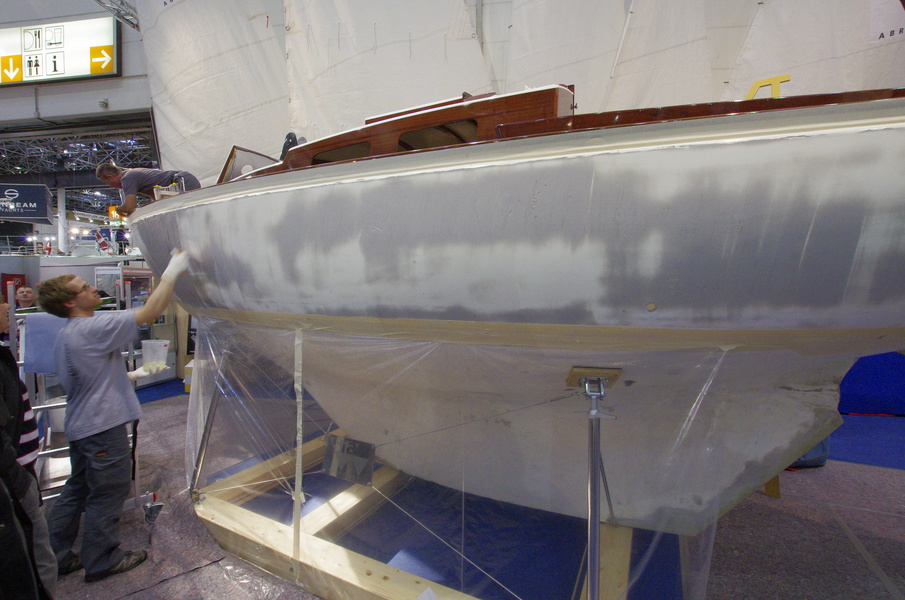
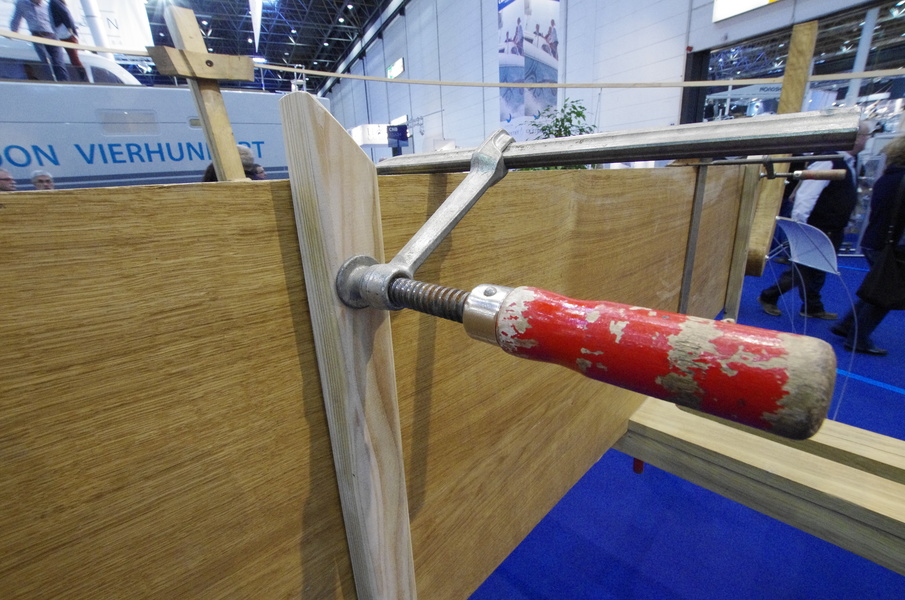
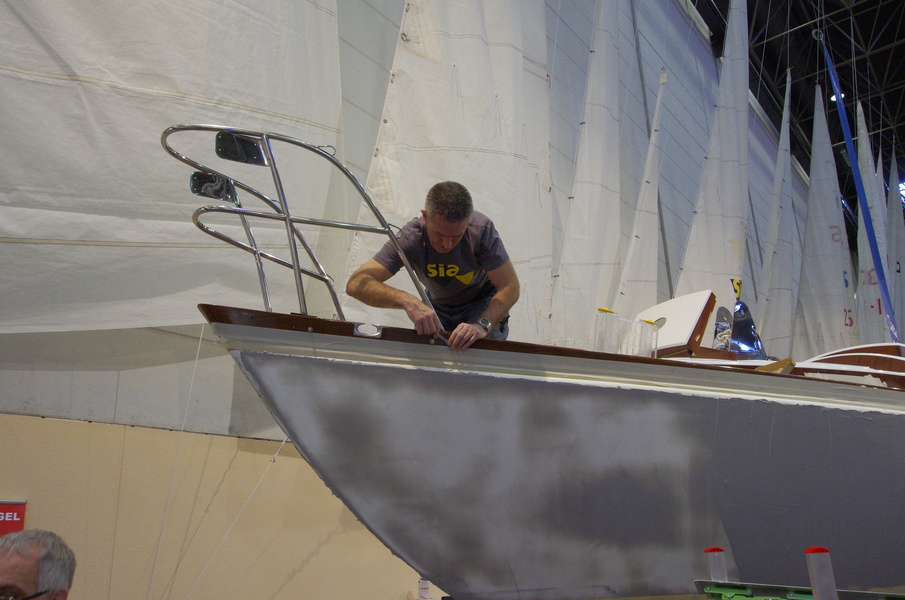
However, the habit to live really well has not entirely left the visitors of the exhibition, so I can't say that stands like «repairer himself» enjoyed a particularly large attention - but, however, bad luck be the beginning. What can't be reproached by the management of Messe Duesseldorf so much as the inability to feel trends (they are also trends in new language). So we shall see...
Not far from repairers a rather strange trimaran was stretched - and only on coming up close I understood what was strange about it: the trimaran was winged. On the whole, it was similar to the French Vodokryl (though, it's difficult to think of something absolutely new and different here), but differed in details rather strongly. The comparison with the French product of the Bavarian shipbuilders (and the trimaran came from Munich) was visibly jarring. « Can't you see the difference? - His designer, Klaus Jenzmann, asked me. - Firstly, we don't have sloping nose wings, we have T-shaped wings. Secondly, we can control angle of attack of any of three wings. Thirdly, we managed to do without draining water ballast. Fourthly, we have a rigid wingtip. German technology! » .

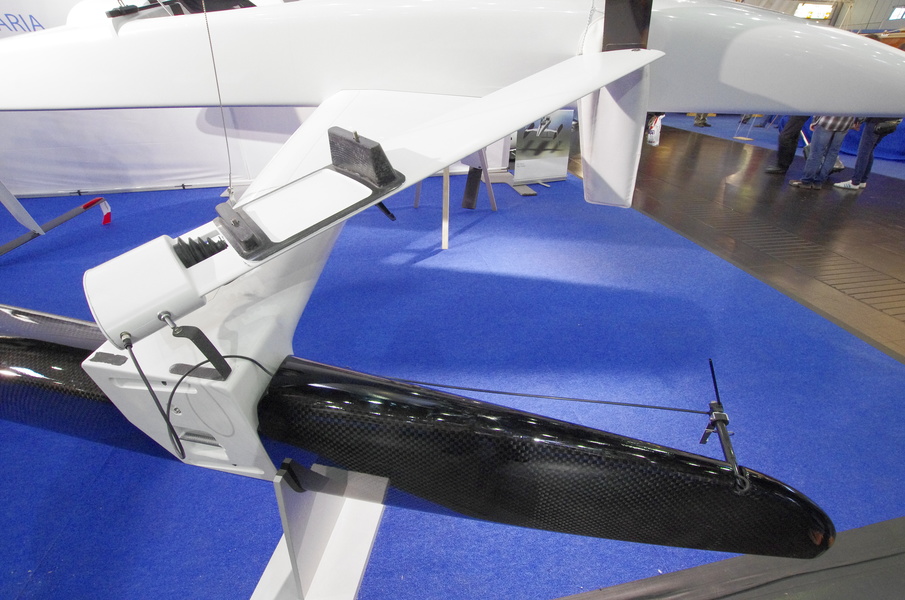
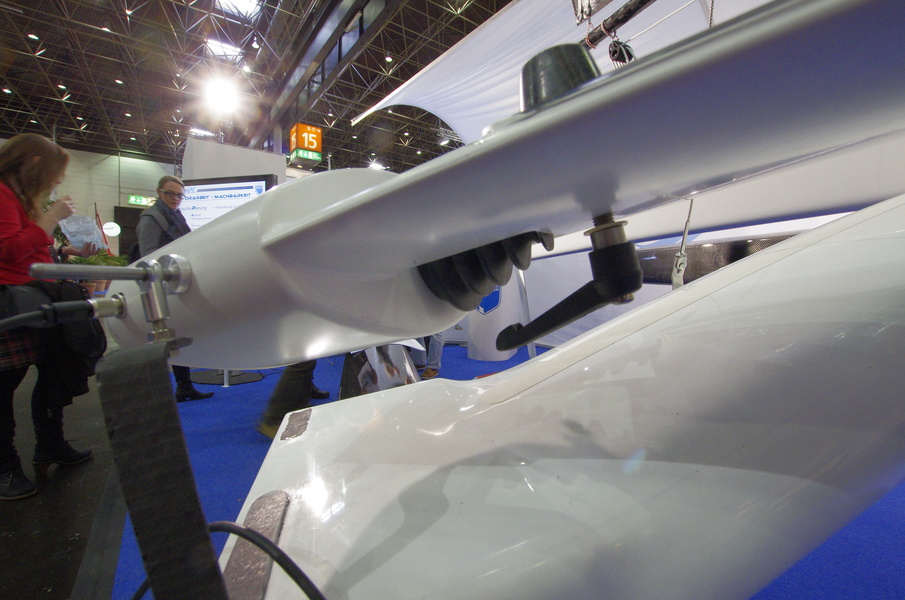
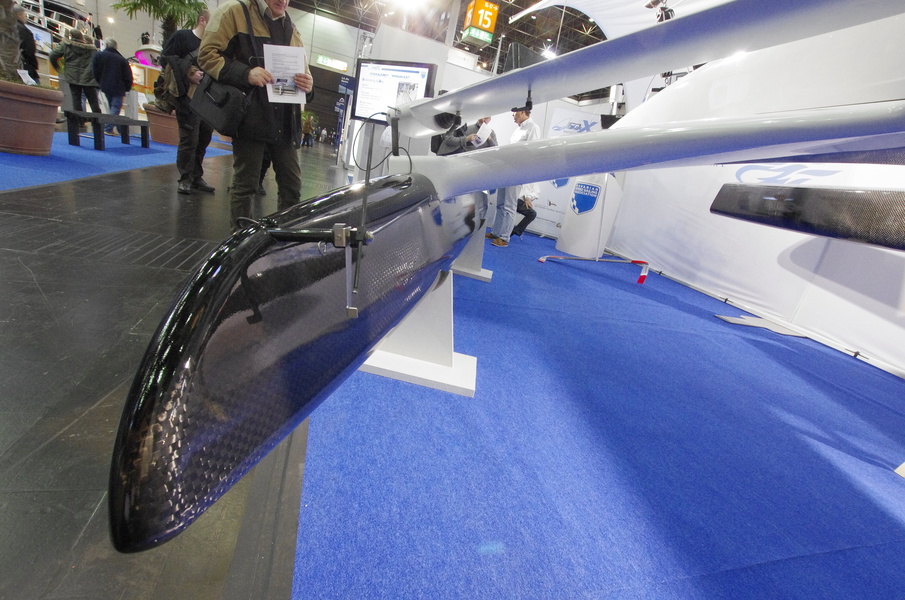

This I, of course, understand. And about the dusky German genius I have also heard (by the way, on the western colonnade of Isaakia his traces are well noticeable, but that case is old, let's forget). Although one must admit that the Germans have gone a step farther than L'Hydroptere, and even in a slightly different direction. If the French, roughly speaking, created an expensive experimental 60-footer, financed from the French military budget, the cunning Bavarians, having taken a sip of Munchner Hell, invented an 18-footer - and it is, you must agree, quite another cocktail!
So, what is this foiler F1, as the project is officially called? It's a small trimaran, clearly 18 feet long and 12 feet wide over water when assembled. It is claimed that two people are able to assemble it from transport state in a few minutes. Naturally, the hulls, beams, centreboards and fenders are all carbon. Operated by one or two people.
The main feature is fully computerized control of the angles of attack of all three wings, performed from the cockpit.
Joystick (as the French) is also absent. Instead, there is a touch screen computer (however, it is needed only for the preliminary settings, then the CPU works itself). Located in the bow floats sensor (apparently laser - this point, the designer delicately avoided) to determine the distance to the water and the approach wave, transmitting information to the CPU, which are sent commands to the stepper motors that set the angle of attack of the wings.
As a result, the designer promises that in force of more than three points foiler F1 will be the fastest sailing boat in the world (of course, any advertising statements should be treated with extreme caution). She has 100m²/t of sailplane power and with that kind of power a brick will also be planing. (With one person on board, the propulsion power decreases to 70 m²/t, which is also enough for the eyes and ears).
It is expected (at least it was calculated) that the boat could go up to 44 knots on all courses.
The matter is that the windward wing can be of negative angle of attack, which will sharply increase the restoring moment needed on a sharp course. The durability does not bother the designer - he says that the mast-wing, the rigging and the whole supporting system are designed for the load up to 20 tons.
The underside of the central body seemed curious and I went to have a look. The designer did not disappoint me, saying that its aerodynamics are designed to use the screen effect. The BSSA - Bavarian Speed Sailing Association- has already been established to exploit the idea further. The designers are planning to build a bigger, already four-seater model on which he is going to compete for the absolute speed record on the water under sails (I remind you that it is set at 500 meters). The designer seriously expects to exceed the 60-knot mark...
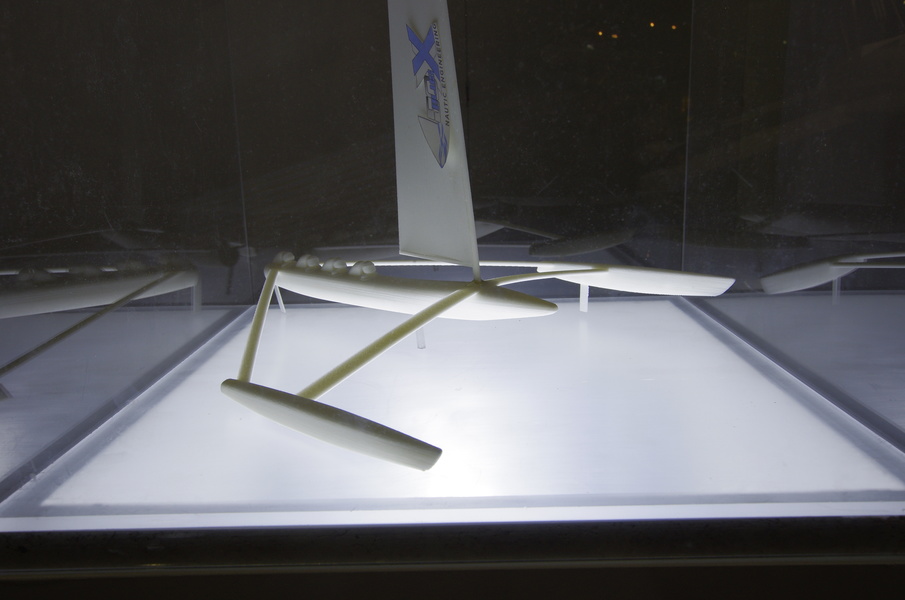
It's a curious boat, and not for nothing the President of the Russian Yachting Federation Shaiduko paid his attention to it too. However, he was clearly not ready to summarize the first results of the exhibition, saying that they need time to comprehend. According to him, the exposition demonstrated an especially great progress in the sphere of light sport yachts, shore equipment and yachtswear.
Of course there has been progress, but also the classics are always valued. The leading companies showing timeless values were Saffier (Holland) and Latitude 46 (France, brandTofinou) which displayed a number of absolutely classic-looking boats made of plastic.» Gentlemen could race them or use them as «weekend yachts (I think, that in yachtbuilding the term «weekend yachts» will appear soon - the tendency of creation of such yachts is quite obvious). Of course, outwardly the boats were captivating by their elegance, but, excuse me, why is the deck of Tofinou 12. walking underfoot??? The boat costs, ahem, quite a lot...
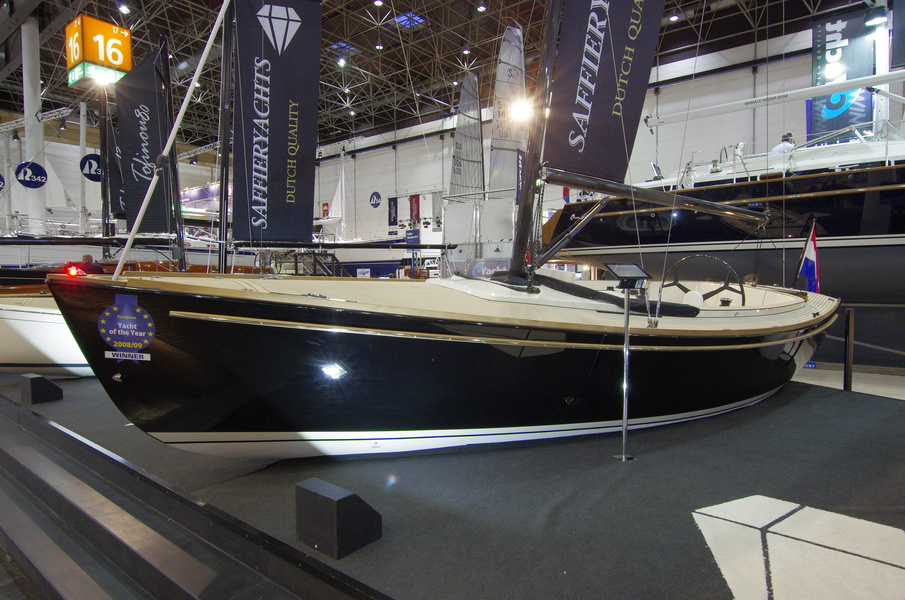
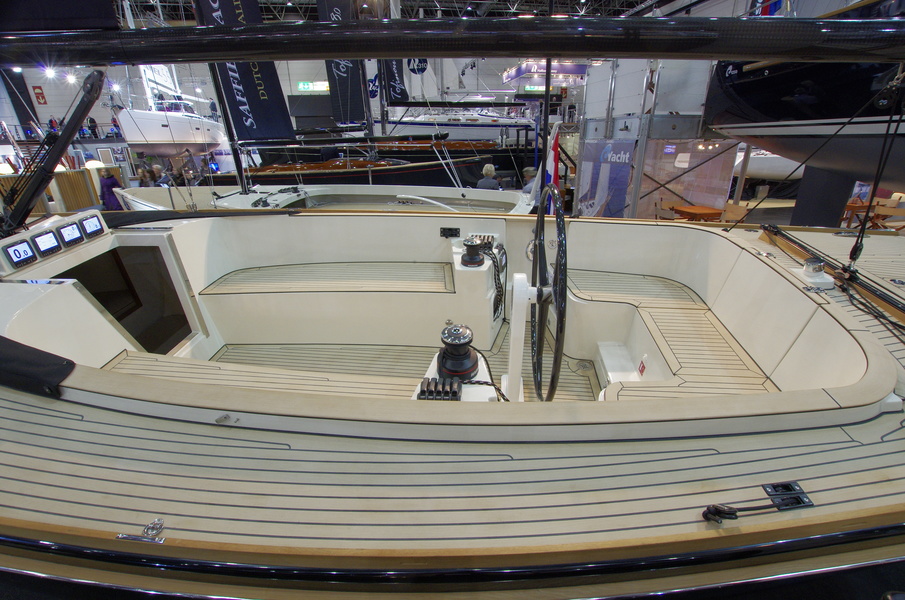
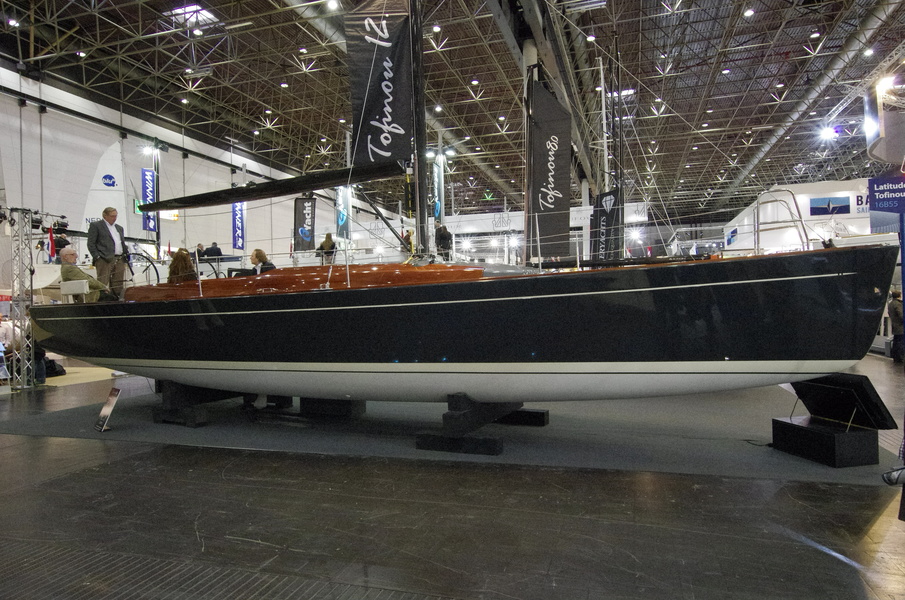

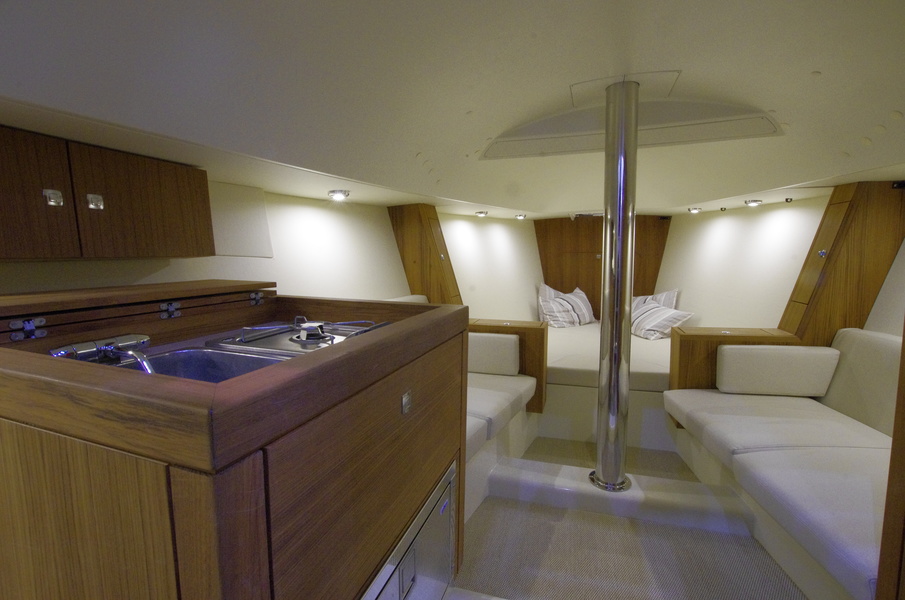
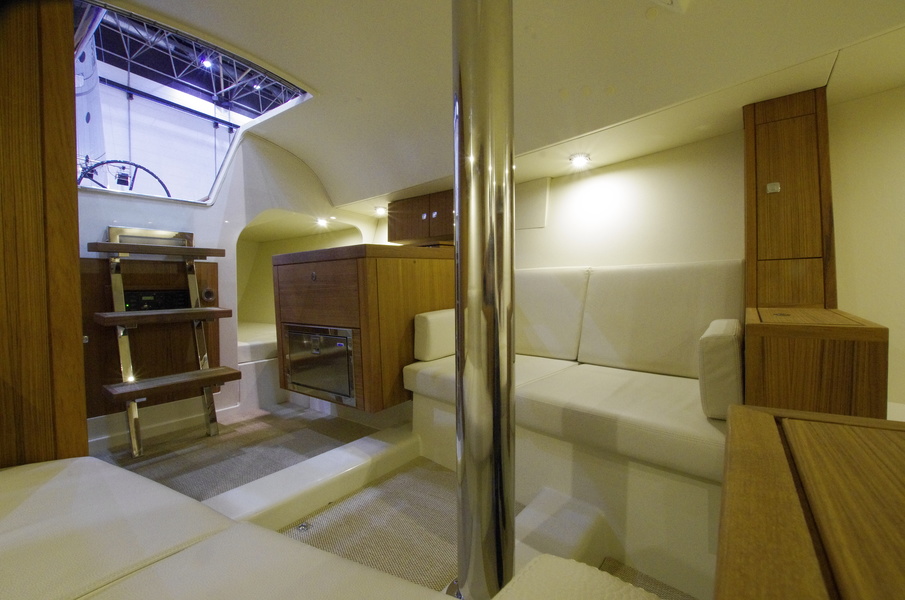
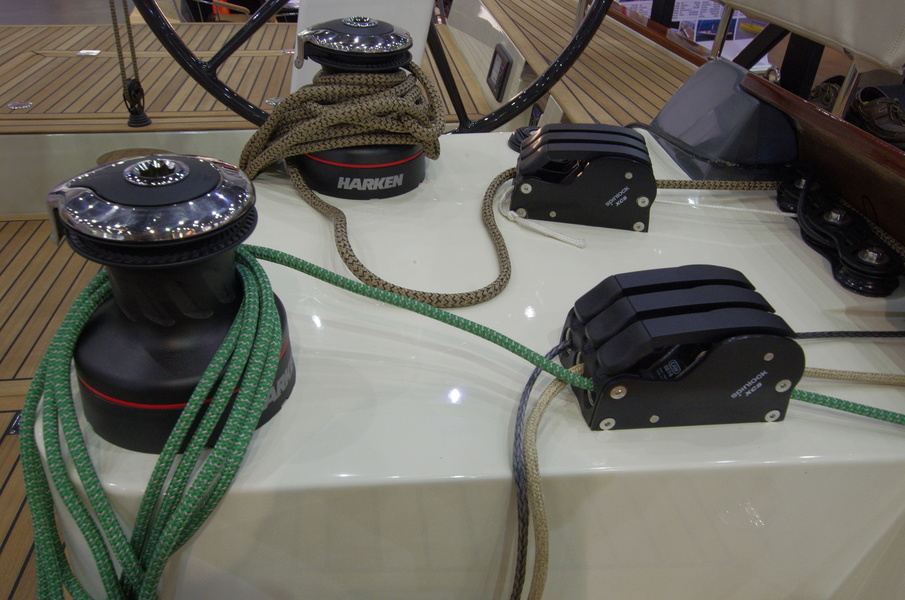
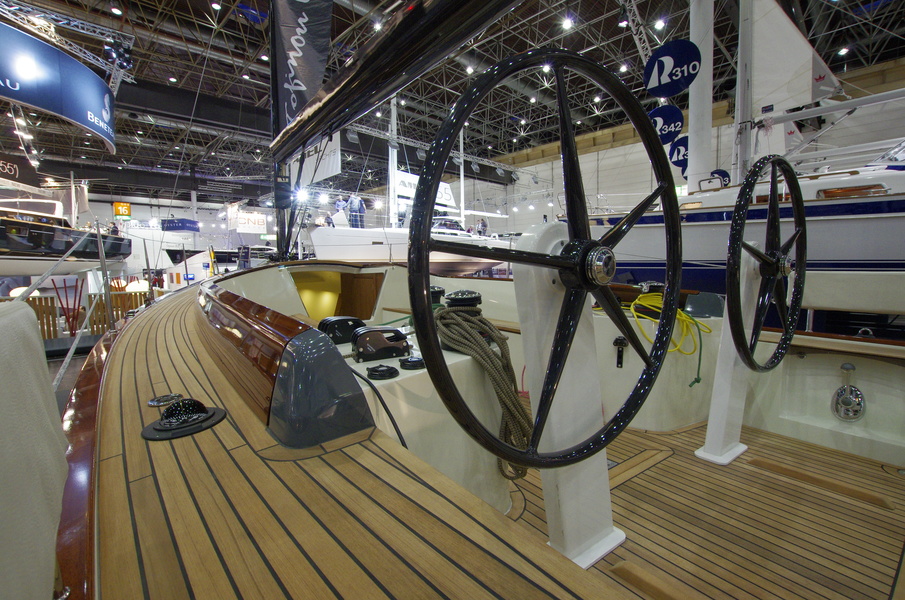
Traditional interest to an antiquity was shown also by Germans who have shown an interesting mix of classics and the modernity. Small redwood cruiser dinghy seemed a traditional pleasure craft, but even a cursory glance in the cockpit with a jumble of tackle and fine-tuning equipment placed on a carbon (!) crossbeam showed that there is something for a keen racer to do here too.
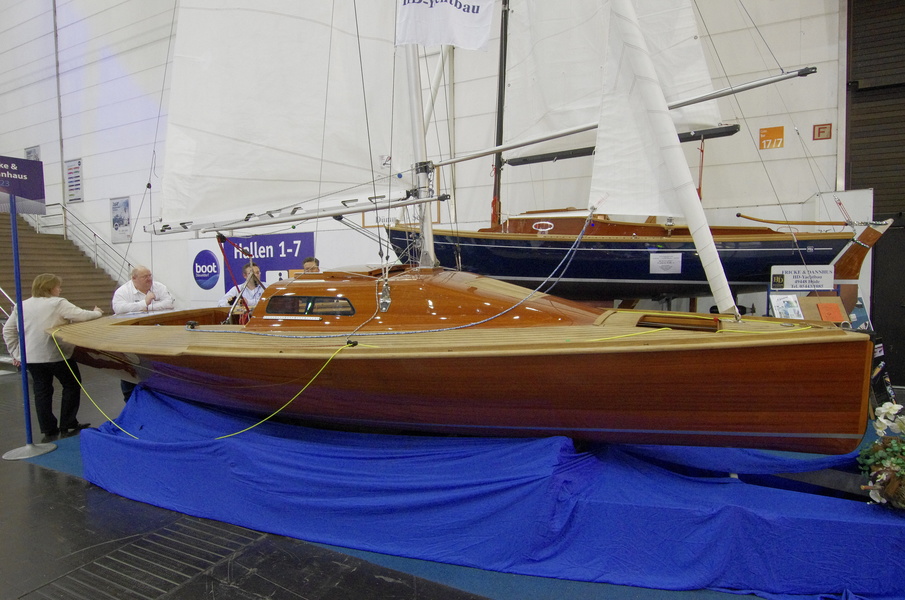
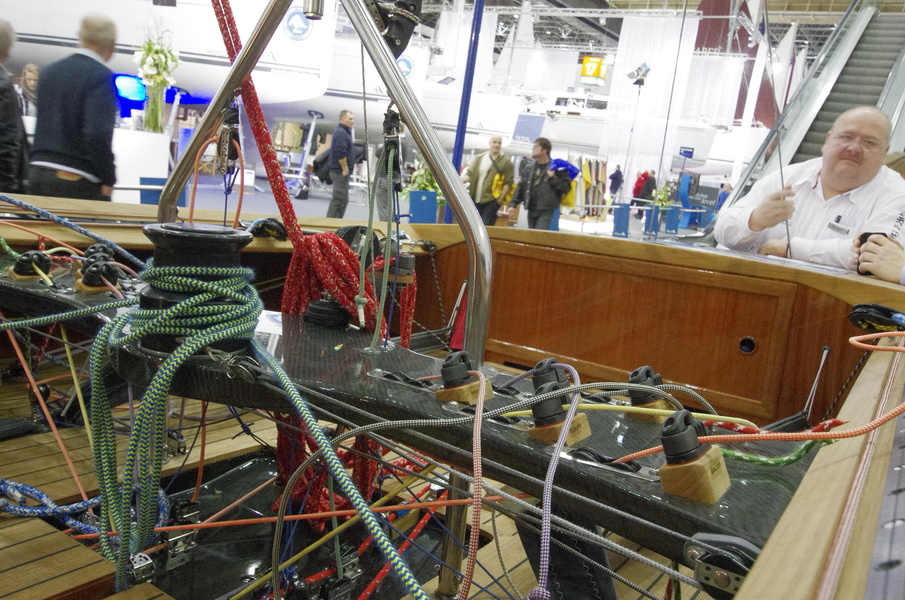
An important moment of the visit was getting to know the Croatian yachts Salona. They are based on the lessons of history and have two trump cards on display: a very attractive price and very well designed hulls with solutions which are not quite standard in today's yacht building.
The Salona yachts have a real kit - and the kit is not displayed as plastic flors, ribs or stringers molded to the hull.
«No, it's an elaborate» stainless steel spider with a keel beam, flotsam and short bends with cable stays. A solution borrowed from those very classic years.» Of course, when the load from the shrouds is not transferred to «breathing» plastic hull, but to the strong steel T-section set, the boat becomes much stiffer, goes better on sharp courses, and besides «not so shabby over the years.
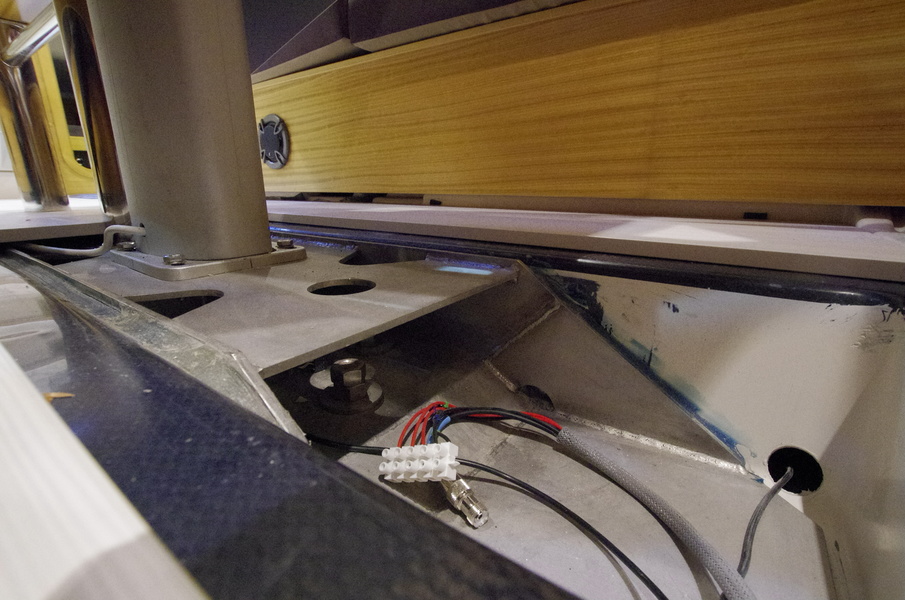
It turns out, that boat of this brand can compete to Fest, Iks and Grand Soleil - trump cards are powerful, besides boats will be lighter than Feists with the same length. Well, and designer's name also means something...
Speaking of Germans, I would like to speak about beloved HanseYachts. After Michael Schmidt's notorious IPO, which turned his private company into a public company, the new investor decided to realize the longstanding idea «Mischa» - to release «all HanseYachts»: a 78-foot sloop, for which a special division of the firm - Hanse Premium (it would be necessary to charge Mischa for the idea four years ago). Without two feet, a superyacht! For the construction was responsible the same well-known design bureau : the boat will be built with a wide use of carbon fabric and vacuum technology, including infusion. The interior designer is the same Birgit Schnaase. So apparently we will see a very radical minimalism inside (although I will check with Frau Schnaase tomorrow), while the exterior already leaves no doubt that «Hanse wants to be Wally».
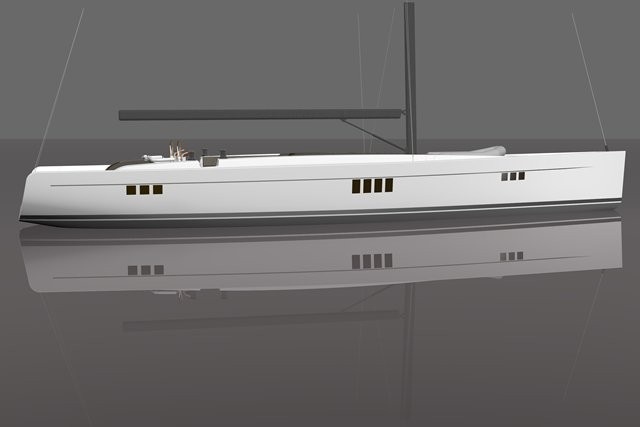
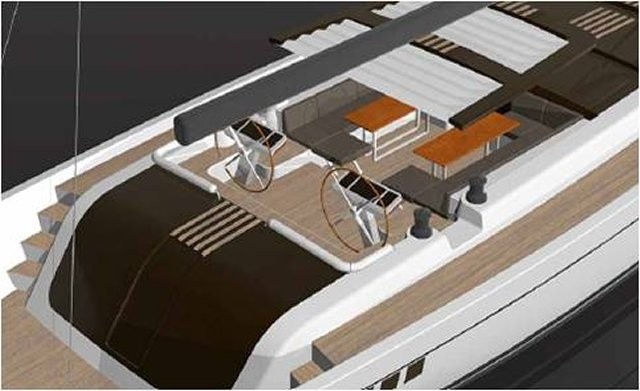
We'll stop there for now...









